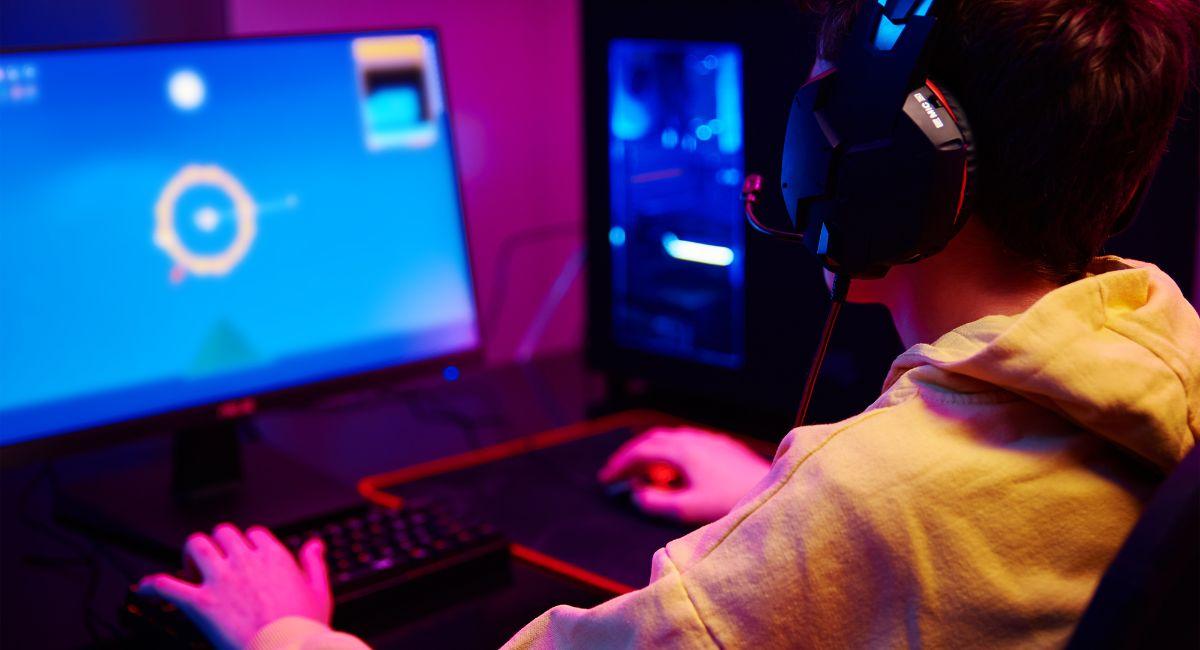Top 10 Amazing Ways Blockchain Gaming Is Approaching Beyond The Coin Rewards

Blockchain gaming has exploded in popularity, fueled by the alluring concept of “play-to-earn” – earning cryptocurrency by playing games. While crypto rewards remain a prominent feature, innovative companies are pushing the boundaries, exploring new ways to engage players and build sustainable gaming ecosystems. Let’s delve into the exciting world of blockchain gaming and the innovative approaches companies are adopting beyond cryptocurrency rewards.
The Allure of Play-to-Earn:
The play-to-earn model has been a game-changer. Players can own in-game assets as NFTs (non-fungible tokens), allowing them to generate income through various means like selling, renting, or participating in play-to-earn activities. This model empowers players by providing real-world value for their in-game achievements.
Also, read – The Future of Blockchain Gaming Graphics With Amazing Unreal Engine 5 And Beyond
Top 10 Amazing Ways Blockchain Gaming Is Moving Beyond Coin Rewards
The concept of blockchain gaming has exploded in popularity, and while the initial focus was often on earning cryptocurrency through gameplay, the true potential of this technology extends far beyond mere coin rewards. Here’s a glimpse into 10 amazing ways blockchain gaming is evolving and redefining the gaming experience:
-
True In-Game Ownership: Traditional games often lock player progress and assets within their ecosystems. Blockchain, with its focus on non-fungible tokens (NFTs), empowers players with true ownership of in-game items like characters, weapons, or virtual land. Players can buy, sell, or trade these assets on secondary markets, fostering a thriving digital economy within the game.
-
Play-to-Earn, Not Just Earn: The “play-to-earn” model incentivizes players by rewarding them with cryptocurrencies or NFTs for their time and effort. However, the focus is shifting towards a more balanced “play-and-earn” approach. The core gameplay experience remains paramount, with earning opportunities integrated seamlessly without sacrificing enjoyment.
-
Democratizing Game Development: Blockchain allows for the creation of Decentralized Autonomous Organizations (DAOs) in gaming. These player-owned communities can participate in decision-making processes, influencing game development, content creation, and even in-game economies. This fosters a more collaborative and community-driven gaming experience.
-
Interoperable Assets: Imagine using your hard-earned sword across multiple games! Blockchain enables the creation of interoperable assets. Players can own NFTs that function across different games within a specific blockchain ecosystem, breaking down traditional silos and creating a more unified gaming experience.
-
The Rise of Playable NFTs: NFTs are no longer static digital collectibles. Playable NFTs are NFTs that represent in-game characters or items that players can actually use within the game. This adds a new layer of utility and value to NFTs, blurring the lines between ownership and gameplay.
-
Evolving Esports Landscape: Blockchain can revolutionize esports by creating transparent and verifiable ownership of in-game assets used in competitive play. This can enhance the legitimacy of esports competitions and potentially increase prize pools through NFT-based ticketing or merchandise.
-
Empowering Content Creators: Blockchain empowers content creators within games. Players can create and sell their own in-game assets as NFTs, generating revenue and fostering a more vibrant and diverse gaming environment. This allows skilled players and artists to monetize their creativity and contributions to the game world.
-
Unlocking New Revenue Streams: Blockchain opens doors for innovative revenue streams for game developers. Games can utilize tokenized economies with in-game currencies or NFTs to generate revenue without relying solely on traditional models like microtransactions or subscriptions.
-
Building Trust and Transparency: Blockchain’s immutable ledger system fosters trust and transparency within games. All transactions involving in-game assets are recorded securely, eliminating concerns about item duplication or manipulation by game developers.
-
The Future of Gaming: A More Engaging and Interactive Experience
Blockchain has the potential to fundamentally change how we interact with games. By empowering players with ownership, fostering community involvement, and enabling innovative gameplay mechanics, blockchain gaming is poised to create a more engaging, interactive, and rewarding experience for players of all stripes. As the technology matures and integrates seamlessly into gameplay, we can expect the boundaries between gaming and reality to continue to blur, ushering in a new era of interactive entertainment.
Examples of Innovation: Pushing the Boundaries in Blockchain Gaming

The world of blockchain gaming is brimming with innovation, with companies constantly developing new and exciting ways to leverage this technology. Here are a few examples of frontrunners pushing the boundaries and shaping the future of this dynamic space:
1. Axie Infinity:
-
Play-to-Earn Powerhouse: Axie Infinity is a pioneer in the play-to-earn model. Players breed, raise, and battle adorable creatures called Axies (NFTs) and earn Smooth Love Potion (SLP) tokens for their efforts. SLP can be used within the game or cashed out for real-world value.
-
Scholarship Programs: Axie Infinity’s scholarship programs are a prime example of innovation. These programs allow individuals in developing economies to access the game by borrowing Axies, fostering financial inclusion and empowering new demographics of gamers.
2. The Sandbox:
-
Metaverse Pioneering: The Sandbox is a virtual world built on the Ethereum blockchain, where players can own virtual land (LAND) as NFTs. This land can be customized, monetized through experiences or games, and even interoperates with other NFT collections. The Sandbox is at the forefront of building a user-generated metaverse powered by blockchain.
-
Gamification of Creation: The Sandbox’s built-in game creation tools (VoxEdit) allow players to design their own 3D assets and experiences. These creations can be turned into NFTs and sold on the marketplace, fostering a thriving in-game economy and empowering creators.
3. Decentraland:
-
Virtual Land Ownership: Decentraland is another prominent metaverse project where players can own plots of land (LAND) as NFTs. LAND can be developed with games, experiences, or interactive elements, allowing players to monetize their creations and build a truly decentralized virtual world.
-
DAO Governance: The Decentraland DAO (Decentralized Autonomous Organization) governs the game’s development and future. LAND owners hold voting rights within the DAO, giving them a say in shaping the metaverse’s evolution.
4. Guild of Guardians:
-
Mobile-First Blockchain Gaming: Guild of Guardians is a mobile RPG (role-playing game) built on the Ethereum blockchain. This is a significant development as it brings blockchain gaming to a wider audience traditionally dominated by PC gamers. The focus on mobile accessibility could be a major driver of mainstream adoption.
-
Focus on Sustainable Play: Guild of Guardians emphasizes a balanced “play-and-earn” approach. While earning opportunities exist, the core focus remains on delivering a fun and engaging gameplay experience.
5. Dapper Labs (NBA Top Shot):
- NFT Collectibles and Gamification: Dapper Labs, with their NBA Top Shot, showcases the power of NFTs in sports. NBA Top Shot allows fans to collect and trade officially licensed highlight moments as NFTs. These digital collectibles can appreciate in value and even be used in challenges and games, blurring the lines between fandom and interactive entertainment.
These are just a few examples, and the landscape is constantly evolving. As blockchain technology matures and integrates more seamlessly into gameplay, we can expect even more innovative companies and projects to emerge, shaping the future of gaming and pushing the boundaries of what’s possible in this exciting new space.
The Future of Blockchain Gaming Beyond Play-to-Earn: A Glimpse into a Transformative Era
 Play-to-earn (P2E) grabbed the initial spotlight in blockchain gaming, but the industry’s potential extends far beyond simply rewarding players with cryptocurrency. As the technology matures and integrates more deeply with gameplay, we stand on the precipice of a transformative era in gaming, characterized by the following key trends:
Play-to-earn (P2E) grabbed the initial spotlight in blockchain gaming, but the industry’s potential extends far beyond simply rewarding players with cryptocurrency. As the technology matures and integrates more deeply with gameplay, we stand on the precipice of a transformative era in gaming, characterized by the following key trends:
1. A Shift Towards Play-and-Earn:
The focus is transitioning from a pure “earn” mentality to a more balanced “play-and-earn” approach. The core gameplay experience takes center stage, with earning opportunities seamlessly woven into the fabric of the game without compromising enjoyment. Imagine slaying dragons and earning valuable loot that holds real-world value – that’s the future of play-and-earn.
2. Deeper Player Ownership and Community Governance:
Blockchain empowers players with true ownership of in-game assets (NFTs) and a voice in shaping the game’s future. Decentralized Autonomous Organizations (DAOs) within games allow player communities to participate in decision-making processes, influencing everything from game development to in-game economies. This fosters a more collaborative and invested player base.
3. Interoperability: Breaking Down Silos and Creating a Unified Experience:
Imagine using your prized sword across multiple games! Interoperable assets, enabled by blockchain, allow players to own NFTs that function within different games within a specific ecosystem. This breaks down traditional boundaries between games, fostering a more unified and expansive gaming experience.
4. The Rise of Playable NFTs:
NFTs are evolving beyond static digital collectibles. Playable NFTs represent in-game characters or items that players can actively use within the game. This adds a new layer of utility and value to NFTs, blurring the lines between ownership and gameplay. Imagine owning and customizing a unique character that travels across different blockchain-based games!
5. Evolving Esports Landscape:
Blockchain can revolutionize esports by creating transparent and verifiable ownership of in-game assets used in competitive play. This enhances the legitimacy of esports and potentially unlocks new revenue streams through NFT-based ticketing or merchandise, further solidifying the esports ecosystem.
6. A New Frontier for Content Creators:
The power of blockchain empowers content creators within games. Players can design and sell their own in-game assets as NFTs, generating revenue and enriching the overall gaming environment. Skilled players and artists can monetize their creativity and contributions to the game world, fostering a more vibrant and diverse ecosystem.
7. Innovative Revenue Streams for Developers:
Blockchain opens doors for novel revenue streams for game developers. Games can utilize tokenized economies with in-game currencies or NFTs to generate income without relying solely on traditional models like microtransactions or subscriptions. This allows for more sustainable development models and potentially leads to richer, more expansive gaming experiences.
8. Unparalleled Transparency and Trust:
Blockchain’s immutable ledger system fosters trust and transparency within games. All transactions involving in-game assets are recorded securely, eliminating concerns about item duplication or manipulation by game developers. This builds a more secure and reliable gaming environment for all participants.
9. Blending Gaming and Reality: The Rise of the Metaverse
Blockchain-powered metaverses are virtual worlds where players can own land, interact with others, and participate in a variety of activities. These metaverses seamlessly integrate NFTs and blockchain mechanics, blurring the lines between the digital and physical worlds. Imagine attending a concert or owning a virtual art gallery in a blockchain-based metaverse – the possibilities are endless.
10. A More Engaging and Interactive Future for Gaming
Blockchain has the potential to fundamentally change how we interact with games. By empowering players, fostering community involvement, and enabling innovative gameplay mechanics, blockchain gaming is poised to create a more engaging, interactive, and rewarding experience for all players. The future of gaming is brimming with possibilities, and blockchain is a key driver of this exciting evolution.
In conclusion, the future of blockchain gaming is a kaleidoscope of vibrant possibilities. While play-to-earn grabbed headlines initially, the true potential lies in a transformative shift towards deeper player ownership, interoperable experiences, and a flourishing creator economy. Blockchain technology is poised to break down silos, foster community governance, and usher in an era of unparalleled transparency and trust. The rise of playable NFTs, the evolution of esports, and the convergence with the metaverse paint a picture of a future where the boundaries between gaming and reality blur. As blockchain integrates seamlessly into gameplay, we can expect a new era of interactive entertainment to emerge, one that empowers players, rewards creativity, and redefines the very essence of what it means to play. Buckle up, gamers – the future of gaming is here, and it’s powered by blockchain.




























































